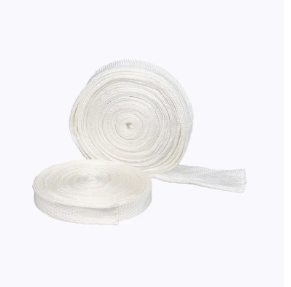1.Fire Retardant Materials: The First Line of Defense Against Rapid Fire Spread
1.1 Fire Spread in Modern Buildings: A Critical Evacuation Challenge
Fires in high-rise buildings and commercial complexes pose one of the most dangerous threats to occupant safety. The rapid movement of flames through corridors, shafts, and ventilation systems can overwhelm people’s ability to evacuate. In many cases, the interior structure and materials of a building significantly influence how quickly a fire propagates—making fire-resistance a decisive factor in survivability.
1.2 Smoke Obstruction and Panic-Induced Delays
During the initial minutes of a fire, thick smoke and toxic gases spread far faster than flames, often leaving people disoriented and unable to determine the location of the fire source or the safest escape route. This confusion leads to delays and panic, particularly when evacuation routes become compromised by fire or smoke.
1.3 High-Rise Evacuations and Limited Escape Time
The vertical structure of high-rise buildings presents added complexity. Evacuating across multiple floors demands time and coordination, yet the speed at which a fire spreads can drastically shorten the evacuation window. Without adequate fire protection, occupants face a life-threatening race against time in confined and elevated environments.

2.Fire Retardant and Flame Retardant Materials: Proven Tools for Containment and Safety
2.1 Inhibiting Fire Progression Through Material Science
Fire Retardant and Flame Retardant materials are designed to resist ignition, suppress flame development, and form a protective barrier under extreme heat. Through chemical reactions and thermal insulation properties, these materials limit the energy transfer and prevent flames from spreading rapidly across building elements.
2.2 Strategic Application Across Critical Building Zones
These materials are most effective when used in structural components such as walls, ceilings, partitions, doors, and escape corridors. In areas likely to come in contact with fire sources—such as electrical rooms, kitchens, or utility shafts—Fire Retardant solutions can play a decisive role in halting the fire’s path before it reaches evacuation routes or sensitive infrastructure.
2.3 Creating Passive Fire Protection Layers for System Integrity
By incorporating flame-retardant systems into a building's architecture, owners create passive fire protection that does not rely solely on active systems like sprinklers. This redundancy ensures that, even in the event of a failure in suppression equipment, key areas remain shielded, allowing vital systems like emergency lighting, alarms, and power circuits to function during an evacuation.

3.Saving Lives and Supporting Firefighting Efforts with Smart Material Choices
3.1 Gaining Critical Evacuation Time for Occupants
The delay in fire development offered by these materials gives occupants the precious minutes needed to evacuate safely. By preventing flames from reaching stairwells, elevator shafts, and emergency exits, the integrity of escape paths is preserved. This improves both the safety and orderliness of the evacuation process, reducing casualties caused by panic or blocked exits.
3.2 Structural Protection and Reduced Casualty Risk
When Fire Retardant and Flame Retardant materials reduce thermal damage to the structural framework, buildings maintain their shape longer, minimizing collapse risk during evacuation. This structural resilience helps ensure that escape routes remain viable, and it reduces injuries from falling debris or sudden structural failures.
3.3 Enhanced Firefighting Access and Toxicity Control
Firefighters benefit significantly from the slowed progression of fire, which gives them more time to assess the situation and target suppression efforts effectively. Additionally, flame-retardant materials often emit fewer toxic gases during combustion, improving air quality and reducing smoke inhalation risk for both occupants and emergency personnel. This contributes to faster, safer rescues and lower health hazards on the scene.

